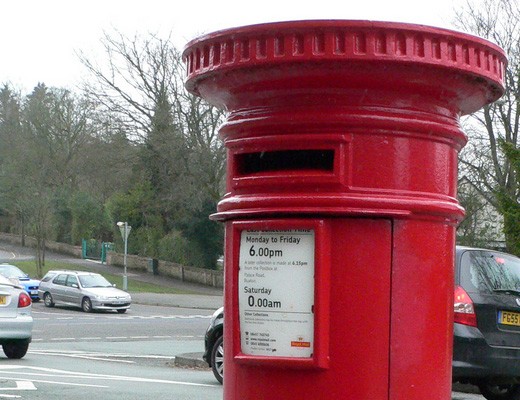Why do growing businesses have cash-flow problems?
Jeremy Hyde from the FD group explains cashflow problems for growing businesses Cashflow is the lifeblood of a business, but fulfillling sales can cost money upfront whilst customers pay 45 days after delivery.
This is a transcript from the Cambridge Marketing Podcast - What has finance EVER done for marketing?
Kiran Kapur: Now, I do want to ask you about cashflow. And I understand from our earlier conversation, often the more you're growing and therefore the better you're doing in a way, the worse your cashflow can be. And I've never really understood that. And it is something that marketers come up against regularly.
Jeremy Hyde: Yeah. It's one of the paradoxes of the business world. Is that those companies that are extremely successful on sales growth, and are managing to grow rapidly, very often are the ones that run out of cash. Your Steady Eddies that aren't growing particularly, they're reasonably flat, not particularly exciting, probably never run out of cash. But those businesses that run out of cash ... Of course, there's going to be these loss-making businesses from time to time. But very often in this sort of early stages of businesses, it's those that are the victims of their own success that run out of cash.
And it is an odd phenomenon to get your head round. And I think the best way to describe it probably is to say, look, when you're selling, and you're growing your business, you actually need quite a lot of cash to fund that growth. And very often non-financiers will think that if my sales goes up, my profits go up. And that's true.
But the issue is that cash flow, which is something completely different to profit, cash flow is the lifeblood of the organization. Without cash the business can't continue to operate. And when you grow rapidly your sales and related profits, that places an enormous amount of stress on cash flow.
And the way to describe it, I guess, is to talk to you about the working capital story. So you imagine a business that's operating, and they receive an order, a big order for a million pounds. And this might be 20% of their entire sales for the year. They receive this order for a million pounds. Fantastic. A great opportunity. And clearly it is. And that million pounds, when they make the product, sell it to the customer, they stand to make £200,000 profit, which is an enormous amount of extra profit for that company.
Kiran Kapur: We'd all like that.
Jeremy Hyde: I think we all would, wouldn't we? So we're all excited, marketeers and the like, and then in steps that black hatted finance director to pour cold water all over our ideas and emotions and the general upbeat that we were before we started. Now, the issue is with this, you start and say, okay, I've got this order for a million pounds. I need to go and buy the components and raw materials that are going to make this, let's assume, some widgets or whatever. But it applies in service businesses as well as manufacturing, as well as wholesale, retail, whatever it is. You need to buy the products first. The products arrive. Sometimes you have to pay in advance. Other times you don't have to pay till you receive them. Or you can get some credit period from the suppliers and you might not have to pay for a month for example. You receive the goods. You then have to employ a load of extra people, and it takes time to employ those extra people. And you might, if you haven't planned it properly, you might have already bought the components. And they're sitting in the warehouse waiting for you to get the people in to make the products. Eventually you get the people, you pay them, and you start to make the product.
This is a huge order this, it takes them an extra month to finish the order, get it all completed. And they finally dispatch. So two months later, they dispatch the goods. Now, remember in the first week of the first month, you'd already spent, and you'd already bought the components, which you had to pay for by the end of that first month. And let's assume for this case that for half a million sales value, the materials, classic number, are around 50%. So you've already paid out half a million at the end of month one. You then roll on for an extra month. You're then paying the staff to get the products manufactured.
Kiran Kapur: Things made, yeah.
Jeremy Hyde: And eventually you sell. You've finished the job. You've paid the staff. And let's assume you've paid the staff a couple of hundred thousand for that sort of value. And finally the goods get dispatched. Now, the customer, because the customer, in order to get that order, you had a conversation with the customer and negotiation that said that you would allow the customer 45 days before they paid you. So you then wait to halfway through month four, and finally they pay you the million pounds. And in this case, you've made £200,000 profit. The issue was, as you can see, for three months, or in fact for three and a half months there, you had to find £700,000. And £700,000 wasn't sitting in your bank account waiting for you to spend it, okay? Most companies don't have that sort of money. This is the issue.
Now I've given you an example here, but as a business grows its sales line, this is happening every day. And eventually the company runs out of the 750,000 or whatever the number is.
Kiran Kapur: And presumably you've got other orders that you're fulfilling, and you've still got to keep paying the staff, and you've got rent and other overheads. Right, that is the clearest explanation I've heard as to why there's a problem with cashflow. And then presumably you go and talk to your finance director and see what you can do to ease the cashflow issues?
Jeremy Hyde: This is it, exactly. This is where planning comes in. And it's just like when we were explaining earlier about the marketing strategy with the marketing director and the FD sitting down and evaluating different strategic options. And sometimes if you've got ... you would hope that most marketing plans are self-financing based on organic growth. And the profits that you make can then fund the next stage and the growth over time. But very often it doesn't. The example I just gave is more likely to be the reality. And in these cases, this is where you need to look at strategic funding. And it's very much the FD's role to understand, okay, let's work these numbers through, let's put the plan together. So this marketing idea, if we invest in this marketing activity, it will generate this level of sales. We then clearly need to supply those sales, those products, or that service, which will come at a cost. And then eventually we'll be paid for it by the customers. So let's do a cash flow over the course of the three years to see what the funding requirements are going to be.



